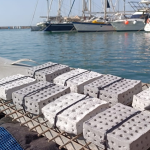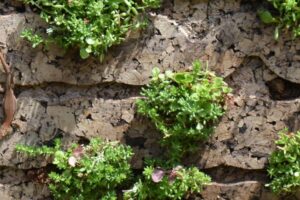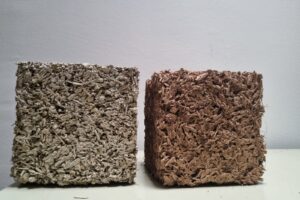
eBRT2030: A new generation of high-performance buses (BRT) in Europe for more sustainable, environmentally friendly transport
August 28, 2023
SEASLAG: A new biomaterial to regenerate marine ecosystems based on byproducts of the steel and agrifood industries
September 19, 202306/09/2023
A team of UPC researchers is working to develop a solution to standardise and improve quality control in fermentation processes in the Agrotech area.
Food fermentation is a processing technology that uses the growth and metabolic activity of microorganisms to transform foods. Fermentation is undertaken to stabilise perishable agricultural products. In addition, the process has evolved to become a key tool to optimise quality in food production. One example is a process based on the reuse of waste in which CO2 is captured and used in processes of product carbonisation (mainly of fermented drinks), and as a mechanism to exert counterpressure on fermentation tanks in order to empty them. Direct real-time monitoring of the production chain (whether at-line or in-line) can be used to ensure standardisation and carry out optimum adjustments to the biochemical fermentation process, to ensure the quality and high organoleptic properties of the final product.
The sensQ project, in which researchers from the AntennaLab research group of CommSensLab-UPC at the Universitat Politècnica de Catalunya - BarcelonaTech (UPC) participate, enables real-time, at-line/in-line monitoring of the metabolic activity of microorganisms in fermentation processes of the agri-food sector, through optical magnetometry sensing technologies.
This sensing obtains results faster and more directly than current laboratory methods that have a latency of 24 hours (or more) to obtain the results. Therefore, by using sensQ the (food and drink) agri-food sector can verify more precisely the standardisation of fermentation processes to ensure the quality of products and optimise the recovery of waste generated to be reused in other processes.
Budget and funding
SensQ has a Budget of €50,000 through a subsidy from the Rural Development Programme of Catalonia 2014-2022 of the Department of Climate Action, Food and Rural Agenda (Catalan Government). The period of execution of the project is from December 2021 to June 2024.




Activity financed through Operation 01.02.01 for Technology Transfer of the Rural Development Programme of Catalonia 2014-2022.
Related Projects
- A research team from the inLab FIB at the Universitat Politècnica de Catalunya - BarcelonaTech (UPC), together with the Asociación de Personas con Movilidad Reducida (AsoPMR), has taken part in the Spot4Dis project to enhance the mobility and autonomy of people with reduced mobility.
- The La Volta project foresees the construction of a large Catalan vault pergola within the Llars Mundet campus, in the Montbau neighbourhood (Horta-Guinardó district). This structure will become a new architectural landmark for Barcelona, combining traditional construction techniques with contemporary innovation. The project involves the Rehabilitation and Architectural Restoration Research Group (REARQ), at the Universitat Politècnica de Catalunya - BarcelonaTech (UPC), and is led by the Architects’ Association of Catalonia (COAC) and the Barcelona Provincial Council.
SATE-VEG: A system for energy renovation of buildings that helps reduce the urban heat island effect
Researchers from the Architecture, Energy and Environment (AiEM) group at the Universitat Politècnica de Catalunya - BarcelonaTech (UPC) have developed SATE-VEG, an external thermal insulation system with a vegetal coating that offers seasonally adaptive thermal behaviour, enhances urban biodiversity and promotes positive health effects. The system is made from organic materials, requires low maintenance and consumes minimal water.- A research team from the Interdisciplinary Group on Building Science and Technology (GICITED) at the Universitat Politècnica de Catalunya – BarcelonaTech (UPC) is leading the BioSAFE project, which aims to develop sustainable building envelopes —mainly façades— designed according to sustainability, comfort and safety criteria, with particular attention to their acoustic behaviour and fire performance.





